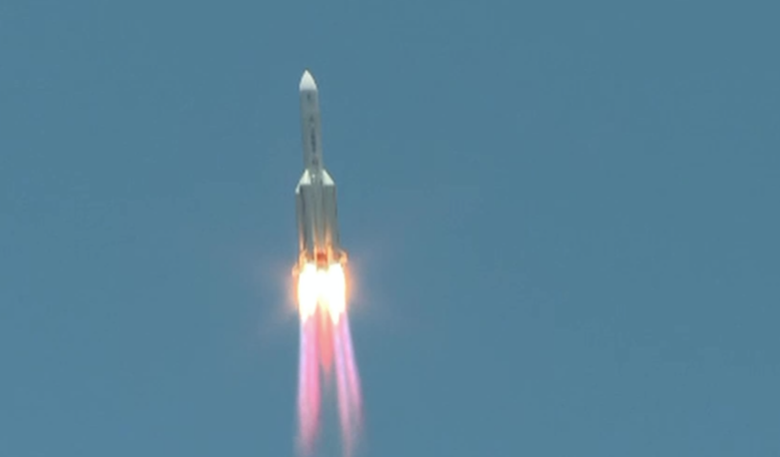China’s Tianwen-1 mission successfully launched early this morning, atop a Long March 5 rocket from the country’s Wenchang Satellite Launch Center on Hainan Island at 12:41 am EDT (04:40 GMT).
The probe now begins a long seven-month journey through deep space to the Red Planet.
Once the mission reaches Mars, China could become only the second nation ever to land and operate a rover on the Martian surface, if the lander and rover combo survives the trip to the planet’s surface.
Known as the “seven minutes of terror”, this daunting and unnerving period is the time it takes a spacecraft to make the hazardous descent from the top of Mars' atmosphere all the way down to the rocky ground below.
"Entering, deceleration and landing (EDL) is a very difficult (process). We believe China's EDL process can still be successful, and the spacecraft can land safely," mission spokesperson Liu Tongjie was quoted as saying ahead of launch by the Reuters news agency.
So far, only the US space agency, NASA, has succeeded on placing a working rover on the planet’s surface. The Soviets' Mars-3 and Europe's Beagle-2 missions both landed safely, but failed shortly afterwards.
NASA is hoping for success again, when next week the agency launches its Perseverance rover from the Space Launch Complex 41 at Cape Canaveral Air Force Station in Florida. Along with Perseverance and Tianwen-1, the UAE's Hope mission makes up the trio of missions heading to Mars this month,
Perseverance is the successor to NASA’s Curiosity rover, and will head to the 49 kilometre wide Jezero crater to seek signs of ancient life on the Red Planet and to better understand the geology and climate of Mars.
The rover will also be accompanied by a small, autonomous rotorcraft nicknamed a “Marscopter.” The Marscopter is essentially a technology demonstration programme to test the viability and potential of heavier-than-air vehicles on the Red Planet so that future explorers can be aided with “eyes in the skies,” as well as trusty rovers on the ground.
Ahead of their own launch, NASA chief Jim Bridenstine congratulated China’s successful start to their mission; “With today’s launch, China is on its way to join the community of international scientific explorers at Mars. The United States, Europe, Russia, India and soon the UAE will welcome you to Mars to embark on an exciting year of scientific discovery. Safe travels Tianwen-1!” Bridenstine said via Twitter.
Aside from boosting our understanding of the Red Planet, China has also remarked that the Tianwen-1 is also on fact-finding mission to see if one day it is possible to colonise Mars.
"China's steadfast commitments to space probes and the development of the related science and technologies are not only aimed at lifting its own capacity to go deeper into space, but also at serving the progress of all mankind," said China’s Xinhua News agency writer Jiang Li.
“With an explosion of human population, declining natural resources and a daunting global challenge of climate change on Earth, the ultimate goal of space exploration to planets like Mars is to secure the longer-term survival and development of mankind,” Li added.











